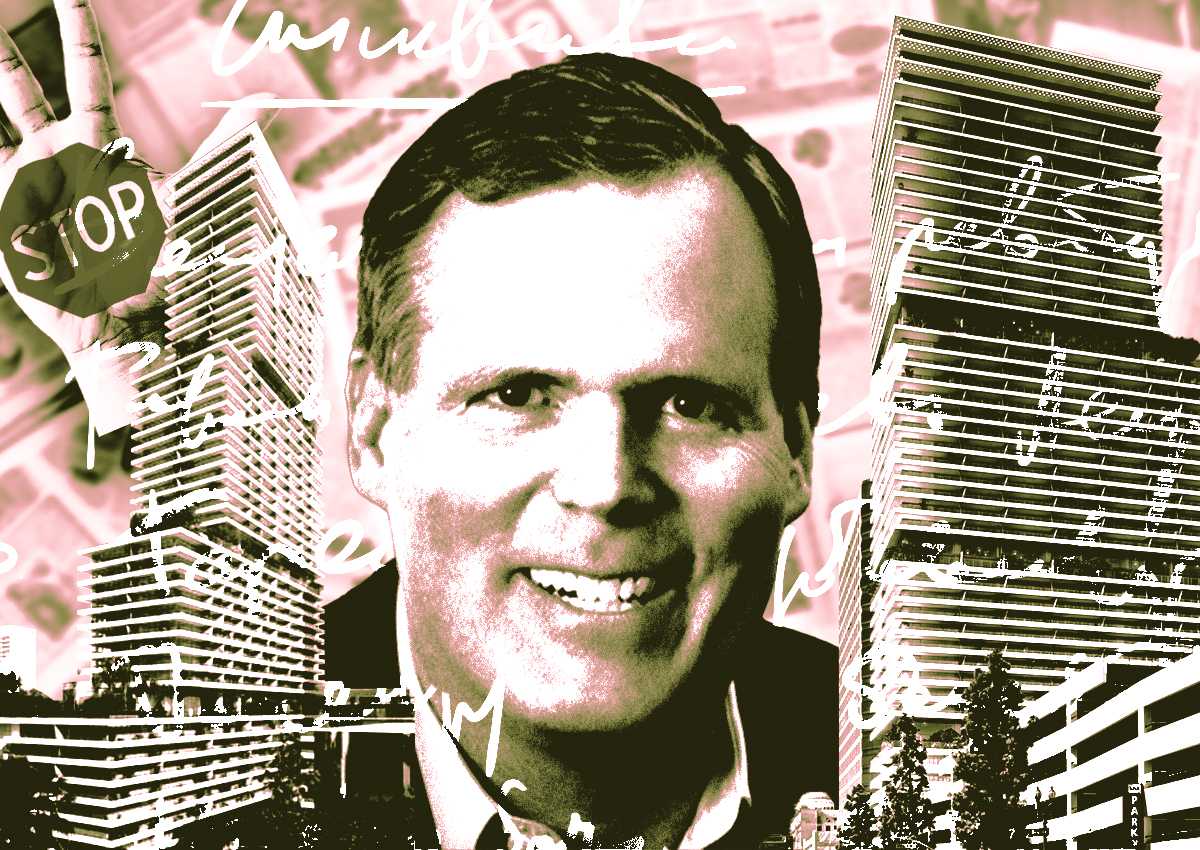The Biggest Winners and Losers in Real Estate in 2021
From the highest of high prices to the lowest of low numbers of homes for sale, there’s no denying that the COVID-19 pandemic upended the nation’s real estate market. And while 2020 was the year that seemed to never end, 2021 appears to have gone by faster than you can say, “Sorry, I didn’t realize I was muted” on that Zoom call.
Now that 2021 is nearly behind us, and we can catch our collective breaths, we decided it was time to take stock. We wanted to know: Over the course of this twisty, unpredictable, whipsaw year in real estate, who were the real winners and losers? Sometimes it seemed hard to tell. So the Realtor.com® data team took a deep dive into the numbers to find out who were the real housing market victors this year, and who got the short end of the “For Sale” sign stick.
To come up with worthy contenders, we looked far and wide, from cities to states to entire generations. Some entrants could have winded up on either list, but at least one key metric tipped them over the edge.
In a continuation of what we saw last year, the demand for housing in 2021 shot up while the inventory of homes for sale shrank. The number of home listings is down 41% so far this year compared with the same time a year ago, while listing prices rose 11% nationwide, Realtor.com data shows. Those extremes resulted in the perfect storm that left our heads spinning.
“After 2020’s roller coaster of a housing market, people expected 2021 to be smoother, but the ride wasn’t over yet,” says Realtor.com Chief Economist Danielle Hale.
So who won the residential real estate skirmish of 2021 and who will need to spend 2022 tending to their wounds?
The biggest real estate winners of 2021
1. Florida

(Getty Images)
Key stat: More than 300,000 people moved to the state between April 2020 and April 2021
This year it seemed like everybody and their grandmother was moving to Florida.
While that’s not entirely true, hundreds of thousands did make the migration in 2021, according to the most recent data from the state’s Office of Economic and Demographic Research. They were mostly lured by warm weather, gorgeous beaches, no income tax—and comparatively attractive home prices.
“Florida became a hotbed for people fleeing the Northeast and Midwest throughout the pandemic,” says Ali Wolf, chief economist of building consultancy Zonda. “The increased demand hit at a time that inventory was scarce, pushing both home prices and rents higher.”
While New Yorkers and other East Coasters continue to be hot for Florida, the pool of other out-of-state buyers expanded. In 2021, more people were coming from as far away as California as many workers went remote, something that was unheard of just a few years ago.
And it’s not just former hot spots like Miami getting all the love; it’s happening across the state. The median list price for homes in Florida overall was up 19% in November compared with last year, while rents in cities like Tampa, Orlando, and Jacksonville have also skyrocketed.
2. The suburbs
Key stat: The number of suburban shoppers spikes 42%
Perhaps the biggest COVID-19 wake-up call was for city folks who were no longer able to justify soul-crushing rents when the perks of urban life suddenly evaporated. Having more space for that home gym, a large backyard to safely entertain in, and a bit more space between neighbors suddenly became more desirable than a small apartment with shared elevators and laundry facilities.
As a concept, suburban living tends to go in and out of fashion with younger homebuyers. Let’s just safely say it’s currently in.
Buyers raced to the suburbs, resulting in heated bidding wars, wild offers over asking price, and folks willing to waive inspections and contingencies to secure a home. The number of suburban shoppers this year was 42% higher than before the pandemic, according to an analysis from the Realtor.com economic research team. And all that extra competition is sending home prices in the suburbs higher.
In 2020, suburban home prices grew faster than urban home prices for the first time since 2017. In September, the median price per square foot of a home in the suburbs was 28% higher than pre-pandemic levels, while urban homes were 25% more expensive, according to the Realtor.com economic research team.
Despite the price increases, suburban homes are selling more quickly, making an already bad inventory problem seem even worse. A typical home in the suburbs sold about three weeks faster this September compared with September 2019, while urban homes moved 16 days faster over the same time period.
3. Baby boomers

(Getty Images)
Key stat: Average profit margin on a median-priced home hits $100,178
OK, boomers, you win.
In an extreme seller’s market, older Americans who owned homes appeared to be the ones holding most of the cards in 2021. They were most likely to be the ones with big homes to sell, as many downsized or moved closer to family and friends. And in many cases, they were able to cash in big-time.
The pandemic led to lower mortgage rates, fewer homes on the market, and a crush of buyers looking for a new place. All of these factors meant homes have been selling fast for record-high prices. In most cases, sellers got what they were asking for (and sometimes significantly more) provided the home was in good shape.
In fact, this summer the average profit margin on median-priced homes reached $100,178—the highest level since the end of the Great Recession, according to real estate information firm ATTOM Data Solutions.
“Boomers are the most likely to own homes and be invested in stocks, both of which have gone up in value over the past year,” Zonda’s Wolf explains. “Boomers selling and moving into a smaller, less expensive home are commanding top dollar on their sale and are often in a place to put in a competitive offer on a new place.”
4. Wall Street investors
Key stat: Investors make up 5.5% of home purchases
Buyers competing for affordable, single-family homes in the suburbs in 2021 included deep-pocketed, large real estate investors as well as first-time buyers. Unlike most first-time home buyers, many of these investors were able to offer all cash for these homes en masse to turn into rentals.
The share of investors in the market hit the highest level since at least 2015, according to an analysis of deed records earlier this year by Realtor.com. Investors made up 5.5% of all home purchases in the first seven months of 2021. Many were capitalizing on the country’s massive shortage of homes, which isn’t expected to be resolved for the next few years.
“Investors saw a tremendous opportunity to leverage this imbalance,” says George Ratiu, manager of economic research at Realtor.com.
5. Homeowners who refinanced their mortgages
Key stat: Mortgage rates hit a record low of 2.65%
One of the few bright spots for homebuyers and homeowners this year was rock-bottom mortgage rates.
Low rates meant buyers could stretch their budgets further as prices escalated, but homeowners who were able to refinance their existing loans were definitely the big winners in 2021. People who already own homes were able to shave $100—or more—off their monthly mortgage payments—ultimately saving tens of thousands of dollars over the life of their loans.
Rates bottomed out in the first week of the year when they fell to an all-time low average of 2.65% for 30-year fixed-rate loans, according to Freddie Mac data. While they’ve since risen to 3.10% in the week ending Dec. 9, they’re still hovering around historic lows. (Two years ago, before the pandemic hit, they were around 3.7%.)
“Homeowners who refinanced this year had a once-in-a-generational opportunity to lock in a low rate for a long period of time,” Ratiu says. “Mortgage rates at the lows we saw are not likely to happen again.”
The biggest real estate losers of 2021
1. Millennials
Key stat: First-time buyers spent 9.6% more on their homes
It isn’t easy being a first-time homebuyer these days. As millennials entered their peak homebuying years in 2021, they found themselves in a housing market unlike any seen before.
Millennials, now aged 25 to 40, made up the largest share of buyers last year, at 34% of the market, according to the National Association of Realtors®. But even those who had done all the right things—making sacrifices to save up for a down payment and working on their credit scores—had a tough time finding the home of their dreams, let alone one in their price range.
And forget about any bargaining power. As more people than ever searched for homes, most buyers this year paid at least the full asking price for their home, according to a recent report from NAR. First-time buyers spent a median of $252,000 on their homes, up from $230,000 in the previous year, according to the NAR report. To do so, the majority told NAR they had to make financial sacrifices to save up for their purchase. And their homes, at a median 1,640 square feet, were nearly 400 square feet smaller than those of repeat buyers.
“First-time buyers are typically looking for homes in the most competitive part of the market,” says economist Wolf. “The lowest-priced homes are desirable to first-time buyers, move-down shoppers, lower-income individuals, investors, and even some move-up buyers.”
A massive shortage of inventory made homes this year less and less affordable, especially for buyers with crippling student loan debt. Meanwhile, they’re competing for the same homes against trade-up buyers who can bring their home equity to the table and investors who are able to pay with cash.
“Sellers typically choose the offer they deem most likely to go through. First-time buyers stand little chance when competing with high-wealth individuals,” Wolf says.
2. Austin, TX

(Getty Images)
Key stat: Rents have risen 30%
Some old-timers may still want to “Keep Austin Weird,” but how weird can you stay when you become America’s fastest-growing and perhaps least affordable city?
The capital of Texas, already growing at a nice clip pre-pandemic, went on an unprecedented tear starting in 2020—and the growth accelerated in 2021, with new tech companies arriving at a steady clip. Austin became one of the most popular destinations for remote workers in 2021, thanks to its funky, youthful culture and home prices that are still cheaper than the San Francisco Bay Area.
But how big is too big? While population growth is usually a good thing for local economies, this relatively small city didn’t have the available housing for sale or rent that was needed to take on the massive influx. This became further apparent after Elon Musk announced Tesla would be moving its headquarters to Austin, where the company is building a factory.
The influx of buyers and low home inventory have sent median list prices about 50% higher in this metro area than what they were pre-pandemic, according to Realtor.com data. Last month, the median list price for a home was an eye-popping $550,000, pricing out many would-be buyers.
Renters aren’t having much luck either. The overall median rent in Austin reached $1,700 in October, up about 30% from the same time a year ago, according to Realtor.com analysis.
“Practically any city in the world would find its infrastructure overwhelmed if it experienced this similar, fast pace of growth,” says Luis Bernardo Torres, research economist at the Texas Real Estate Research Center at Texas A&M University.
“It’s going to become very difficult to find a home in Austin with a price tag below $250,000 in the coming years that is considered a starter home,” Torres says. “Affordability will be an issue facing Austin’s housing market going forward.”
3. Home flippers
Key stat: Flippers made 7 percentage points less profit per house
It may seem like flippers should have had their best year ever; but instead, it was both the best and the worst of times for these enterprising folks.
The number of home flips reached record levels last year, but profits shrank, according to a Realtor.com analysis of deeds records. From April to June of this year, flippers made the lowest profits since 2008. On average, a flipper earned about 43% after selling a flip, but that doesn’t take into account the cost of hiring contractors and paying for materials like lumber, along with appliances. Typically, flippers seek a return on investment of 50% or more.
Despite sky-high demand for homes and rising prices, flippers were often spending more to secure homes. A record-low number of homes for sale meant they often had to offer more than they had for homes just a year or two ago to beat out the competition from first-time buyers and other investors. Rising costs for construction and appliances, plus delays due to the global supply chain shortage, significantly ate into their bottom lines.
“Flippers got burned by the incredibly steep price jumps we saw over the past year and a half,” economist Ratiu says.
4. Renters
Key stat: Rents have jumped 9%
Rental prices cratered at the start of the pandemic in many of the larger, more expensive cities on the coasts. Many urban dwellers who suddenly no longer had to commute to their offices five times a week relocated to cheaper parts of the country or moved to the suburbs.
But data from Realtor.com shows rents haven’t just recovered, they’re reaching new all-time highs, and renters are losing out. So far this year, rents have risen about 9% across the country, and in some areas (ahem, Austin) rental prices are up more than 30%.
“For renters this year in particular there was really a one-two punch,” Ratiu says. The first was the expiration of eviction moratoriums earlier this year that had kept many struggling tenants in their homes, and the second was a steep rebound in rent prices.
This comes as buying a home becomes less affordable, too, leaving renters between a rock and a hard place.
“Landlords are in a position where they’re more than making up for the lost revenue and time by bringing rents to record highs,” Ratiu says.
5. The San Francisco Bay Area

(Getty Images)
Key stat: 31% of San Franciscans left the city
Shocker: The Bay Area may no longer be either the hottest or the coolest place in America to live.
When remote work became the norm for many tech workers, San Franciscans really began to rethink why they were paying so much to live in their prized City by the Bay. So they took off. Many looked for cheaper, nearby alternatives and made the move to places like Reno, NV; Seattle; and Phoenix. Much of the reason that Tesla moved to Texas was that workers could no longer afford homes close to the office.
“Even before the pandemic, the Bay Area is a market that was chronically undersupplied of homes, especially those that could be considered entry-level,” Wolf says.
When renters realized they couldn’t afford to buy homes in the Bay Area, many expanded their home searches and moved elsewhere. San Francisco recorded a 31% increase in people leaving the city, according to a report from the nonpartisan California Policy Lab. Meanwhile 21% fewer people moved in to take their places.
But despite this mass exodus, home prices somehow still grew even more unaffordable. The median home appreciation in San Francisco proper grew 20% from spring 2020 to fall 2021, according to an analysis from real estate firm Compass. It was even more pronounced in counties outside the city limits as wealthy buyers looking for bigger homes sent home prices in those neighborhoods even higher. All these rising prices are putting homeownership even more out of reach for many locals.
“A flood of people became interested in homeownership during the year. That increase in demand, especially among higher-income individuals, helped drive home prices higher,” Wolf says.



